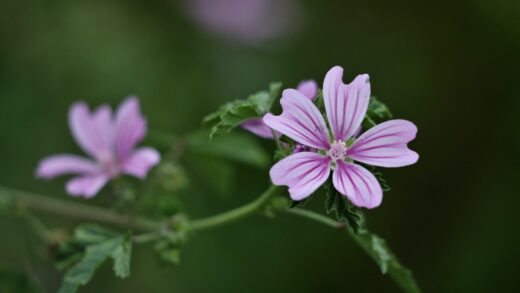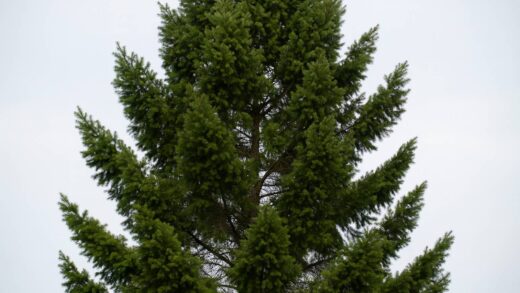The process of planting and propagating biting stonecrop is remarkably straightforward, reflecting the plant’s resilient and self-sufficient nature. This hardy succulent is eager to grow and spreads with enthusiasm, making it an excellent choice for gardeners of all skill levels who wish to establish a vibrant, low-maintenance ground cover. Whether you are starting with nursery-grown plants, divisions from an existing patch, or simple cuttings, the key to success lies in providing the right foundational conditions. Proper site preparation, focusing on excellent drainage and maximum sun exposure, is paramount and will ensure the plant establishes quickly and thrives for years with minimal intervention.
Before placing any plants in the ground, it is crucial to prepare the garden bed to meet the specific needs of this drought-tolerant species. Biting stonecrop abhors “wet feet” and will quickly succumb to root rot in heavy, waterlogged soil. Therefore, the planting area must be well-draining. If you are working with compacted clay or dense loam, you must amend the soil by incorporating generous amounts of coarse sand, gravel, or perlite to improve its porosity and allow water to percolate through freely.
The ideal location for planting is one that receives at least six hours of direct sunlight per day. This ensures the plant maintains its compact, dense form and produces the profusion of bright yellow flowers for which it is known. While it can survive in partial shade, its growth will be less vigorous and more open. Once the site is chosen and the soil is prepared, you can proceed with the planting process, spacing individual plants or clumps to allow them room to spread and form a continuous mat.
Propagation is one of the most rewarding aspects of growing biting stonecrop, as it is incredibly easy to create new plants from an existing one. The most common and effective methods are division and taking stem cuttings, both of which have very high success rates and can be performed throughout the growing season. This ease of propagation makes it a cost-effective option for covering large areas, filling in rock walls, or sharing with fellow gardening enthusiasts.
Preparing for planting
The initial step in establishing a healthy colony of biting stonecrop is meticulous site preparation, which sets the stage for long-term success. Begin by selecting the sunniest and driest spot in your garden. This plant’s preference for arid conditions means it is perfectly suited for locations that might be too harsh for other perennials, such as south-facing slopes, the top of retaining walls, or the narrow strips of soil between sidewalk pavers. A thorough assessment of the chosen area’s light exposure throughout the day is a critical first move.
More articles on this topic
Once you have identified the perfect sunny location, the next focus must be on the soil. Biting stonecrop requires soil with impeccable drainage above all else. To test your soil’s drainage, dig a small hole about 30 centimeters deep and fill it with water. If the water drains away within an hour, your drainage is likely adequate. If it takes several hours or longer, you will need to amend the soil. This is not a step to be skipped, as poor drainage is the most common reason for this plant to fail.
To improve soil drainage, remove the existing soil to a depth of about 15-20 centimeters and mix it with an equal part of inorganic material. Coarse builder’s sand (not fine play sand), small gravel, or perlite are all excellent choices. This mixture creates a gritty, porous medium that allows water to pass through quickly, preventing the root zone from becoming saturated. This amended soil structure closely mimics the plant’s natural habitat on rocky ledges and in sandy soils, providing the perfect environment for its roots.
Finally, before planting, ensure the area is completely free of weeds. Biting stonecrop is a dense ground cover, but newly planted small plugs can be overwhelmed by aggressive, established weeds. Take the time to thoroughly weed the bed by hand or by using an appropriate herbicide well in advance of planting. Creating a clean slate ensures that your new stonecrop plants will not have to compete for sunlight, water, and nutrients as they begin to establish themselves in their new home.
The planting process step-by-step
Planting biting stonecrop is a simple and forgiving task, whether you are working with plants purchased from a nursery or divisions from another part of your garden. The best time to plant is in the spring or early autumn, which allows the plants to establish their root systems during milder weather, avoiding the stress of extreme summer heat or winter cold. Begin by watering the plants in their pots an hour or so before you intend to plant them; this helps to hydrate the root ball and makes it easier to remove from the container.
More articles on this topic
Gently remove the plant from its container, being careful not to damage the delicate stems. If the roots are tightly bound in a circular pattern, a condition known as being root-bound, gently tease them apart with your fingers to encourage them to grow outwards into the new soil. Dig a small hole in your prepared bed that is roughly the same depth as the root ball and slightly wider. The goal is to set the plant so that the top of its root ball is level with the surrounding soil surface.
Place the plant in the hole and backfill with the prepared soil, gently firming it down around the base of the plant to eliminate any large air pockets. Avoid burying the crown of the plant, which is the point where the stems meet the roots, as this can lead to rot. Once the plant is in place, water it in lightly. This initial watering helps to settle the soil around the roots and provides the moisture needed to kickstart its establishment.
When planting multiple plugs to create a ground cover, spacing is an important consideration. For a quick-fill effect, you can place smaller plants about 15 to 20 centimeters apart. They will grow and spread to fill in the gaps, typically forming a dense, continuous mat within one or two growing seasons. After planting, you can apply a thin layer of fine gravel or grit as a top dressing, which can help to suppress weeds, conserve moisture, and prevent soil from splashing onto the foliage, further reducing the risk of rot.
Propagation by division
Division is one of the easiest and most reliable methods for propagating biting stonecrop and is an excellent way to manage the size of a mature clump or to create new plants for other areas of the garden. This method involves simply separating an established plant into smaller sections, each with its own set of roots and stems. The best time to divide biting stonecrop is in the spring or early autumn, as the cooler temperatures and moderate rainfall provide ideal conditions for the new divisions to recover and establish themselves quickly.
To begin, use a spade or a garden fork to carefully lift a section of the established stonecrop mat from the ground. Try to get as much of the root system as possible, but do not worry if some of the shallow roots are severed, as the plant is very resilient. Once you have lifted the clump, you can gently pull it apart with your hands into smaller pieces. Each piece, no matter how small, as long as it has a few stems and some attached roots, is a viable new plant.
The size of the divisions can vary depending on your needs. You can separate the clump into just a few large sections or into many small individual plantlets. There is no strict rule, but ensuring each new piece has a healthy portion of both foliage and roots will increase its chances of rapid establishment. This process is also an opportunity to rejuvenate an older patch of stonecrop that may have become woody or sparse in the center; by dividing it and replanting the vigorous outer sections, you can refresh the entire planting.
Once you have your divisions, they should be replanted immediately to prevent the roots from drying out. Plant them in a prepared bed at the same depth they were previously growing, firming the soil gently around them. Water the newly planted divisions lightly and keep the soil slightly moist for the first couple of weeks until you see signs of new growth. This indicates that the divisions have successfully rooted and are beginning to establish themselves in their new location.
Propagation from cuttings
Propagating biting stonecrop from stem cuttings is an incredibly simple and highly effective technique that can be done at any time during the active growing season, from spring through summer. This method leverages the plant’s natural ability to form roots from its stems, allowing you to create a large number of new plants from just a small amount of parent material. All you need is a healthy, established plant and a suitable place to root the new cuttings. This process is so straightforward that often, broken pieces of the plant will root themselves where they fall.
To take cuttings, simply snip or pinch off several healthy stems from the parent plant. Each cutting only needs to be a few centimeters long. You do not need to be precise, as almost any piece of stem has the potential to grow. After taking the cuttings, you can allow them to sit in a dry, shady spot for a day or two. This allows the cut end to form a callus, which can help to prevent rot when the cutting is placed in soil, although this step is not strictly necessary for such a resilient plant.
There are two primary ways to root the cuttings. The first and simplest method is to just scatter the cuttings over the surface of a prepared garden bed where you want them to grow. Gently press them into the soil to ensure good contact. With occasional light watering, the stems will develop roots and begin to grow in a matter of weeks. This is an excellent way to establish a large patch of ground cover with minimal effort.
Alternatively, for a more controlled approach, you can insert the cut ends of the stems into a tray or pot filled with a well-draining succulent or seed-starting mix. Place the cuttings so that at least one node (the point where leaves emerge from the stem) is below the soil surface. Keep the soil lightly moist but not waterlogged, and place the container in a location with bright, indirect light. Roots will typically form within two to three weeks, at which point the new plants can be transplanted to their permanent location in the garden.


















